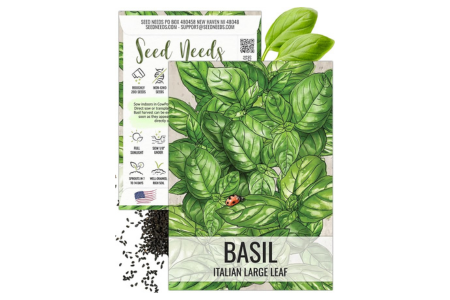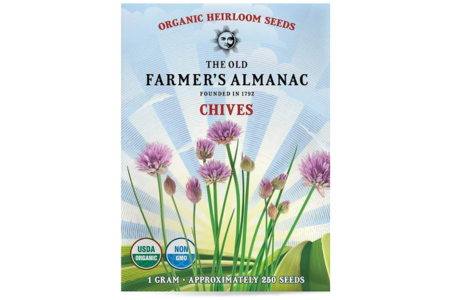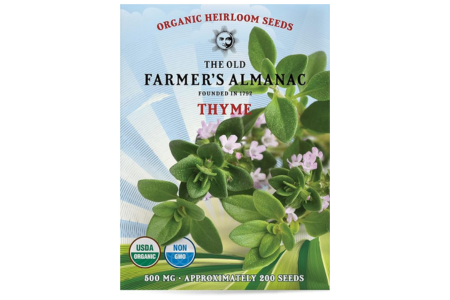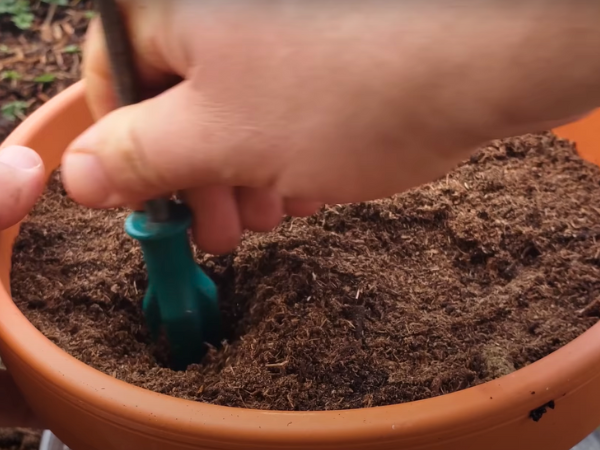Indoor herb gardening is perfect for those with limited outdoor space. Fresh herbs can enhance your cooking and provide many health benefits.
This step-by-step guide empowers you to successfully grow fresh herbs indoors. From selecting the perfect varieties to mastering their care, you’ll gain the knowledge to cultivate your own flavorful harvest.
Why Grow Herbs Indoors?
Indoor herb gardening is simple and rewarding. You can have a variety of herbs at your fingertips for cooking, garnishing, or making teas.
Year-round Freshness And Convenience
No need to wait for summer or spring to enjoy your favorite flavors. With a little care, your herbs can thrive indoors.
- Grow what you need, when you need it—no more wilted store-bought bunches.
- Fresh herbs enhance the taste of your dishes.
- Keep herbs close by for quick access while cooking.
Indoor herbs require minimal space. Choose herbs like basil, parsley, or mint that grow well indoors. Here’s a simple table of popular herbs and their needs:
| Herb | Light Requirement | Watering Frequency |
|---|---|---|
| Basil | 6-8 hours of sunlight | Every 3-4 days |
| Parsley | 4-6 hours of sunlight | Weekly |
| Mint | 4-6 hours of sunlight | Every 2-3 days |
Indoor herbs thrive in a controlled environment. You can manage light, temperature, and moisture easily.
Save Money And Reduce Waste
Growing herbs indoors saves money over time. Fresh herbs from the store can be expensive. They often wilt before you use them.
- Cut costs on grocery bills.
- Minimize waste by using fresh herbs as needed.
- Enjoy organic herbs without the premium price.
Store-bought herbs come in large bunches. Most of it ends up in the trash. When you grow herbs at home, you can harvest just a sprig or two.
Best Herbs To Grow Indoors
Choosing the right herbs is key. Some herbs are easier to grow than others. This guide helps you find the best herbs to grow indoors.
Easiest Herbs For Beginners
Starting with herbs can be simple and fun. Some herbs are forgiving and thrive even with minimal care. Here are a few that are perfect for beginners:
- Basil: A sweet and fragrant herb, great for Italian dishes.
- Mint: Refreshing and versatile, perfect for teas and desserts.
- Parsley: Adds a fresh taste to many meals, easy to grow.
- Chives: Mild onion flavor, excellent for salads and garnishes.
These herbs are not only easy to grow but also useful in the kitchen. They require minimal maintenance, making them ideal for new gardeners.
 |
 |
 |
|---|
Herbs That Do Well Indoors
Thyme, oregano, and cilantro adapt well to indoor conditions. They don’t need much space and can grow in small pots. Here are more details on these herbs:
- Thyme: A hardy herb with a strong flavor, great for stews and meats.
- Oregano: A staple in Italian and Mediterranean cooking, easy to grow.
- Cilantro: Popular in salsa and Asian dishes, it grows well indoors.
These herbs are resilient and can handle indoor temperatures.
 |
 |
 |
|---|
How To Choose Based On Your Cooking Style
Match your herb garden to your favorite recipes and cuisines. For instance, if you love Italian food, grow basil and oregano. If you enjoy Asian dishes, consider cilantro and mint.
Here are some tips for choosing herbs:
- Think about your favorite dishes.
- Consider the herbs you use most often.
- Choose herbs that you enjoy cooking with.
By focusing on what you cook, you can create a useful indoor garden. This makes cooking more enjoyable and flavorful.
Light, Pots & Soil: Getting The Basics Right
Focus on three basics: light, pots, and soil. These elements are crucial for healthy herb growth. Getting them right will ensure your indoor garden thrives.
Finding The Right Spot In Your Home
Light is vital for growing herbs indoors. Most herbs need plenty of sunlight to grow strong and healthy. Here are some tips to find the best spot:
- Look for south- or west-facing windows. These spots get the most sunlight.
- Ensure your herbs receive 6+ hours of sun each day.
- Avoid dark corners. Herbs will not thrive in low light.
- Consider using a grow light if natural light is not enough.
Observe the light patterns in your home throughout the day. Adjust the location of your pots if needed. You may also want to rotate your pots. This helps ensure all sides get even sunlight.

Best Pots For Indoor Herbs
The right pot can make a big difference. Choose containers that help your herbs grow well. Here’s what to look for:
- Use containers with drainage holes. This prevents water from pooling, which can harm roots.
- Clay and ceramic pots are great choices. They allow air to flow and help avoid overwatering.
- Consider the size. A pot that is 6 to 8 inches wide is perfect for most herbs.
Choose pots that suit your style. Keep in mind that good drainage is key for healthy herbs.
What Kind Of Soil To Use
The right soil is essential for herb growth. Herbs thrive in light, well-draining potting mix. Here are some tips:
- Choose soil made for herbs or veggies. It provides the nutrients needed for growth.
- Avoid heavy garden soil. It can compact and hold too much water.
- Consider mixing in some perlite or sand. This improves drainage and aeration.
Here’s a quick checklist for soil:
- Well-draining
- Lightweight
- Rich in nutrients
Using the right soil will help your herbs grow strong. Healthy soil leads to vibrant plants and delicious flavors.

Step-by-step: Planting Your Indoor Herb Garden
In this guide, we will explore the steps to plant your indoor herb garden. You will learn about different methods for starting your herbs, how to plant seeds, and the process of transplanting seedlings.
Starting From Seeds Vs. Seedlings
Choosing between seeds and seedlings is an important step. Both options have their benefits.
- Seeds:
- Offer a wide variety of herbs.
- More affordable than seedlings.
- Allow you to grow herbs not available as seedlings.
- Seedlings:
- Are easier to manage for beginners.
- Grow faster than seeds.
- Require less care during early stages.
Consider your needs and preferences. If you want variety, seeds are a good choice. If you prefer ease, go for seedlings.

The Process Of Planting Seeds Indoors
Planting seeds indoors is simple and fun. Follow these steps to start your herb garden:
- Fill pots with moist soil.
- Plant seeds ¼ inch deep and cover lightly.
- Water thoroughly.
- Set pots in a sunny spot.
Keep the soil moist but not soggy. Check daily for moisture. You should see sprouts in 1-3 weeks. Be patient and care for your seeds.
Once seedlings appear, ensure they get enough sunlight. Rotate pots if needed to promote even growth.

Transplanting Seedlings Into Your Containers
Transplanting seedlings is the next step. After a few weeks, your seedlings will be ready for larger containers.
Follow these steps for successful transplanting:
- Choose containers with drainage holes.
- Fill with quality potting mix.
- Gently place seedlings in soil at root level.
- Water thoroughly after planting.
Set containers in a sunny area. Monitor for signs of stress. Adjust watering as needed. Your herbs will thrive in their new home. Enjoy fresh herbs in your cooking!

Daily Care Tips For Healthy Herbs
This section provides essential tips to keep your indoor herbs thriving. With proper watering, fertilizing, and pruning, you can enjoy a bountiful indoor herb garden.
Watering Schedule For Indoor Herbs
Watering is vital for your indoor herbs. Each herb has different needs. Generally, herbs prefer slightly dry soil. A good rule is to:
- Water when the top inch of soil feels dry.
- Don’t overwater; this can lead to root rot.
Here’s a simple watering schedule based on common indoor herbs:
| Herb Type | Watering Frequency |
|---|---|
| Basil | 2-3 times a week |
| Mint | 1-2 times a week |
| Parsley | Once a week |
| Thyme | Every 10-14 days |
Check the soil moisture regularly. Adjust your watering based on the season. Herbs may need less water in winter.
Fertilizing Basics
Use a balanced fertilizer to support their growth. Feed once a month with a diluted liquid fertilizer. Here are some tips for fertilizing:
- Choose a fertilizer with equal parts nitrogen, phosphorus, and potassium.
- Follow the package instructions for dilution.
- Apply fertilizer during the growing season, from spring to early fall.
Observe your herbs. If the leaves appear yellow or pale, they may need more nutrients. Adjust your fertilizing schedule accordingly.
Pruning And Harvesting Tips
Pruning encourages healthy growth and helps your herbs thrive. Snip often to encourage full growth and prevent flowering. Here are some pruning tips:
- Use clean, sharp scissors or shears.
- Remove dead or yellowing leaves regularly.
- Cut just above the leaf node to promote new growth.
For harvesting, take what you need. This method allows your herbs to continue growing. Always leave enough leaves on the plant for photosynthesis.
Common Problems And How To Fix Them
Knowing how to fix these issues is key to having healthy herbs. In this section, we will explore typical problems and easy solutions.
Yellow Leaves Or Drooping Plants
Yellow leaves or drooping plants are signs your herbs need attention. This issue is usually caused by overwatering or poor drainage. Here are some quick fixes:
- Check the soil moisture. Stick your finger into the soil. If it feels soggy, let it dry out.
- Ensure your pots have drainage holes. This allows excess water to escape.
- Adjust your watering schedule. Water only when the top inch of soil is dry.
Sometimes, yellow leaves may indicate nutrient deficiencies. Consider fertilizing your herbs with a balanced fertilizer. Follow the instructions on the package for best results.
Herbs Growing Tall And Thin (leggy)
Leggy herbs are another common issue. They appear tall and thin, often stretching towards the light. This problem usually means they need more light. To fix leggy herbs:
- Move them closer to a window. South-facing windows provide the best light.
- Consider using grow lights. These can offer the extra light your herbs need.
- Rotate your plants. This encourages even growth on all sides.
Trim leggy herbs to encourage bushier growth:
- Cut back the tall stems.
- Remove any dead or yellowing leaves.
- Fertilize lightly to support new growth.
With these tips, your indoor herbs can thrive and provide fresh flavors.






